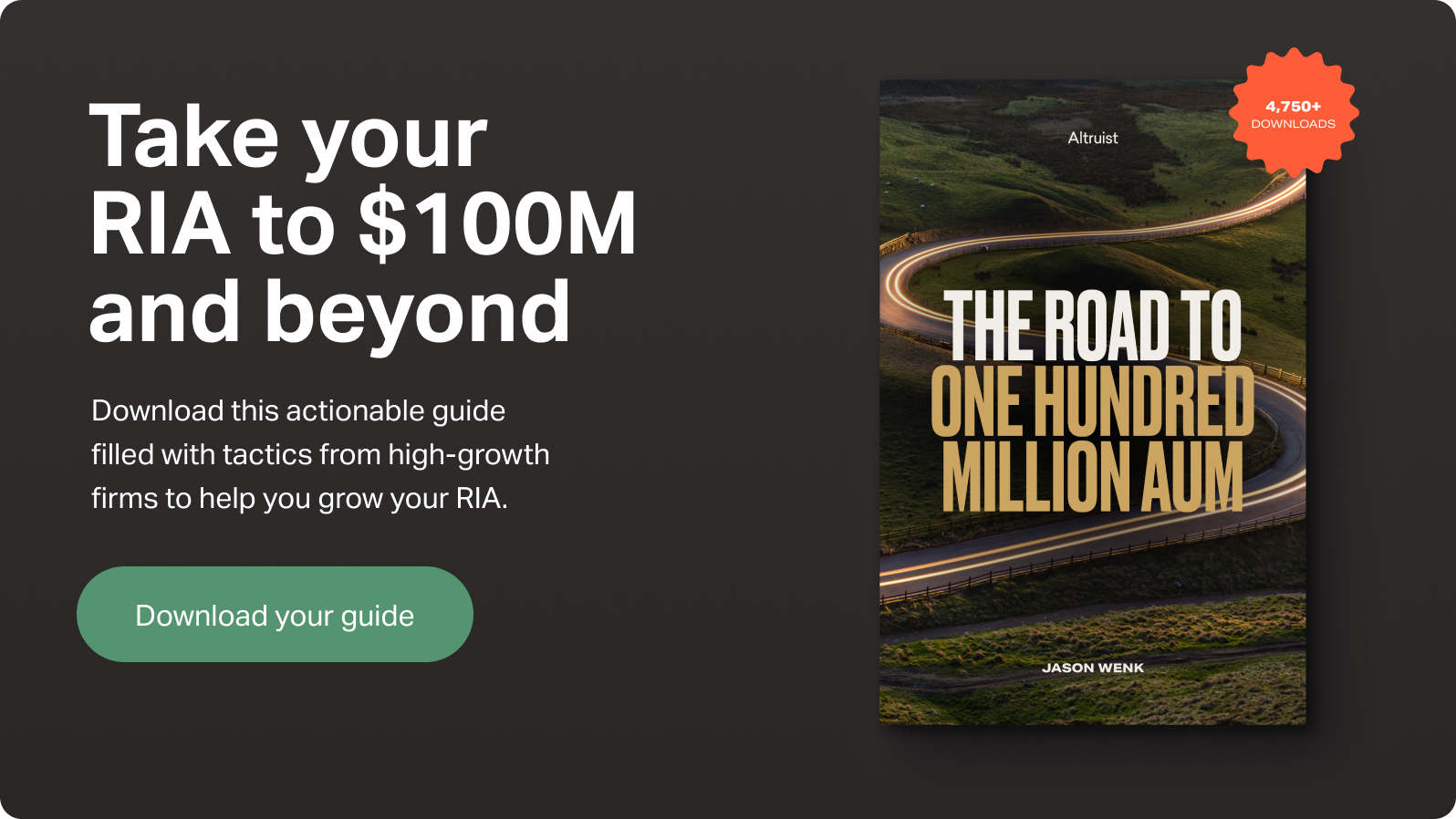Benchmarks are valuable tools for advisors and their clients alike. They can give helpful context to portfolio returns, give insight into the strategy being deployed, and highlight the advisors differentiated approach.
Altruist’s benchmarking solution allows advisors to easily create blended benchmarks that they can assign to their clients’ accounts so that they are available to compare whenever it comes time to review performance.
However, to get the most value out of using a benchmark, it is crucially important to choose an appropriate benchmark for the portfolio being managed. With Altruist’s benchmarking tool, there’s an easy way to do this. Here are our top three recommendations for successfully using benchmarks for your clients’ portfolios. However, to get the most value out of using a benchmark, it is crucially important to choose an appropriate benchmark for the portfolio being managed. With Altruist’s benchmarking tool, there’s an easy way to do this. Here are our top three recommendations for successfully using benchmarks for your clients’ portfolios
1. Set expectations with your clients
First of all, it’s important to define the benchmark and share it with your client ahead of any reporting periods you plan to use it as a comparison. It may be tempting to choose a benchmark after the fact, but that would only mislead your clients and erode trust.
Clients who are informed of benchmarks will have a better understanding of the strategy for their portfolio as well as its performance.
2. Make sure the benchmark is an investable alternative
Another important aspect to consider when choosing a benchmark is whether it is an investable alternative. Many institutional money managers will choose market indices like the S&P 500 as their benchmark because it is realistic at their scale to replicate such indices.
However, for many independent financial advisors, the S&P 500 or other market indices do not represent a realistic investable alternative because they are not operating at the same scale as institutional money managers. In order for an advisor to exactly replicate the S&P 500, they may have to use a direct indexing solution, and even then the solution may only be viable for sufficiently large accounts.
For most advisors, we think that choosing a benchmark such as an ETF that tracks an index such as the S&P 500 is a much more comparable benchmark.
3. Limit systematic bias
Finally, when choosing an appropriate benchmark, try to limit the systematic bias between the portfolio being managed and the benchmark. The systematic bias can be roughly determined by calculating the beta of the portfolio versus the selected benchmark. A beta value closer to 1 indicates that the portfolio and benchmark are responding to similar systematic risk factors and are reasonable comparisons.
In order to reduce systematic bias, you should be looking to define a benchmark that aligns with the broad asset class, geographic and style weightings of the portfolio being implemented. We suggest blending together multiple ETFs in order to achieve the desired asset allocation of your benchmark.
We think by having an appropriate benchmark in place, both advisor and client will be better aligned on the investment strategy used in their portfolio. Clients will gain valuable insight into portfolio performance, and advisors may find that it can assist with portfolio construction and maintenance so they can ultimately serve the financial goals of their clients.















